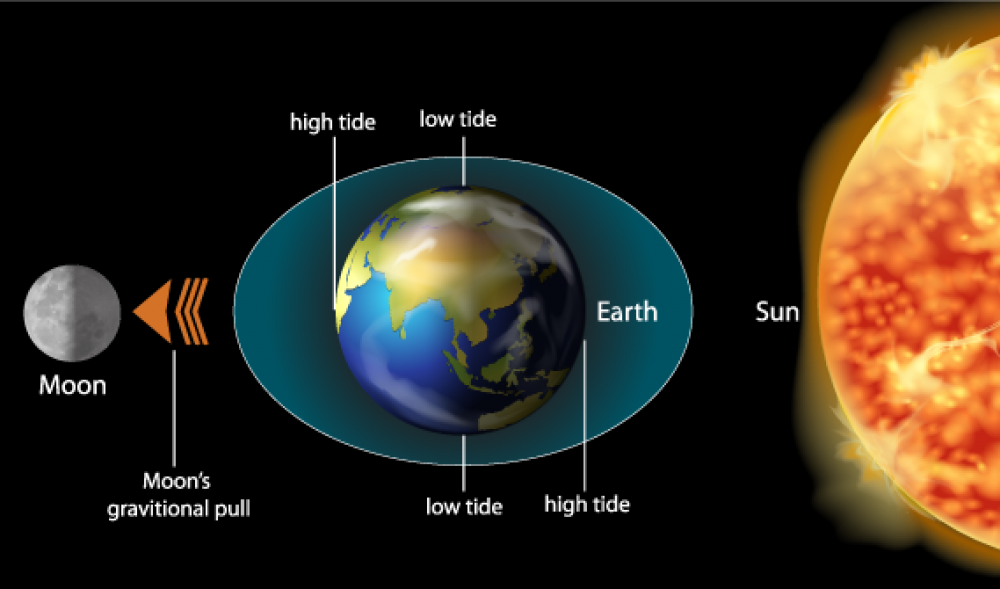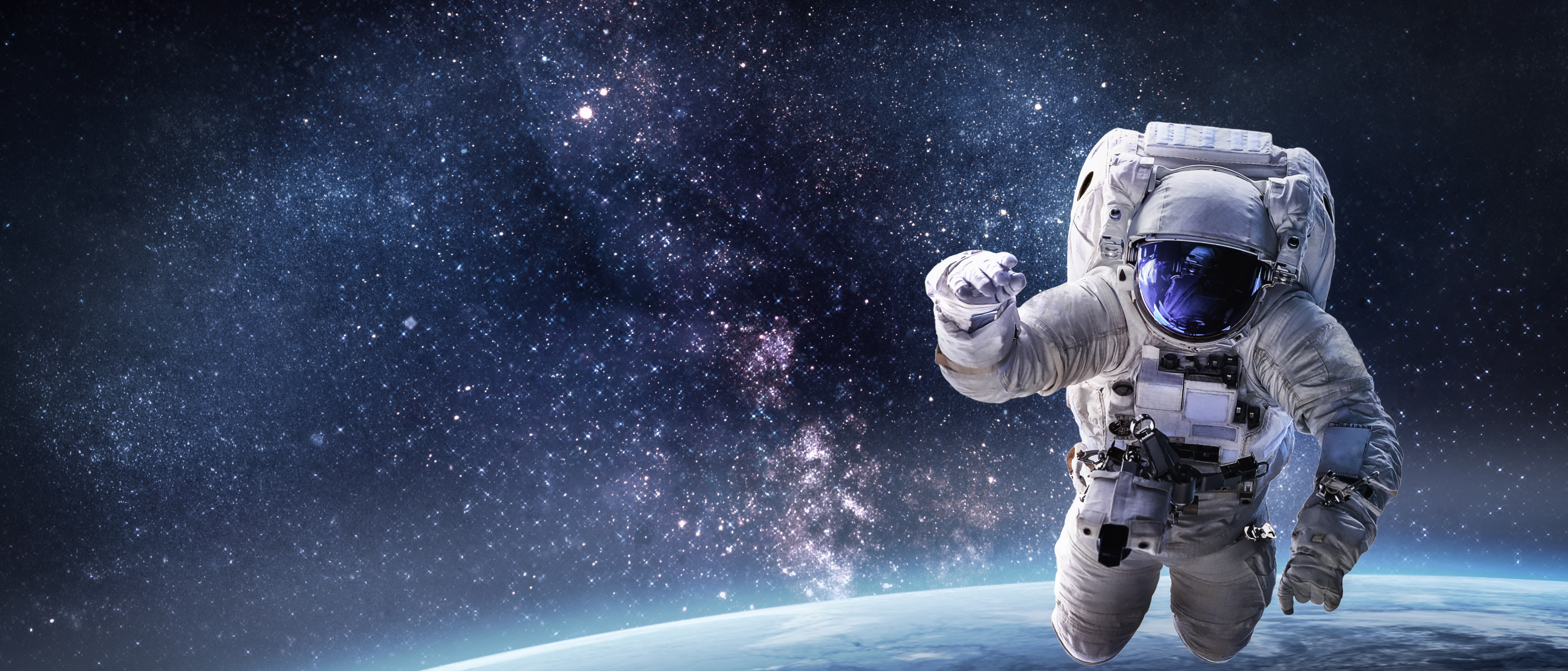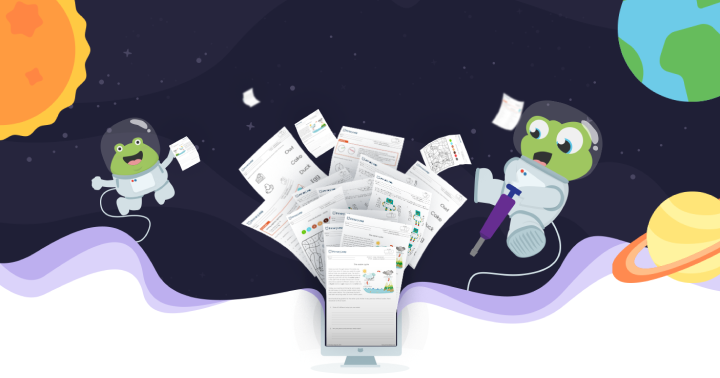Do all objects fall at the same speed?
If we take two balls that are the same size but different weight and throw them out of a window, they would both hit the ground at the same time. This is called the equivalence principle. The force of gravity makes both objects travel at the same speed.
What is weight?
Weight is the measurement of the force of gravity pulling on an object. Our weight on Earth is how hard gravity is pulling us towards the Earth’s surface.
Because each planet has a different mass, it has a different gravitational force. Larger objects have a larger mass. If you travelled from planet to planet, even though your mass would be the same, your weight on each planet would be different. You would weigh less on smaller planets and more on larger planets.
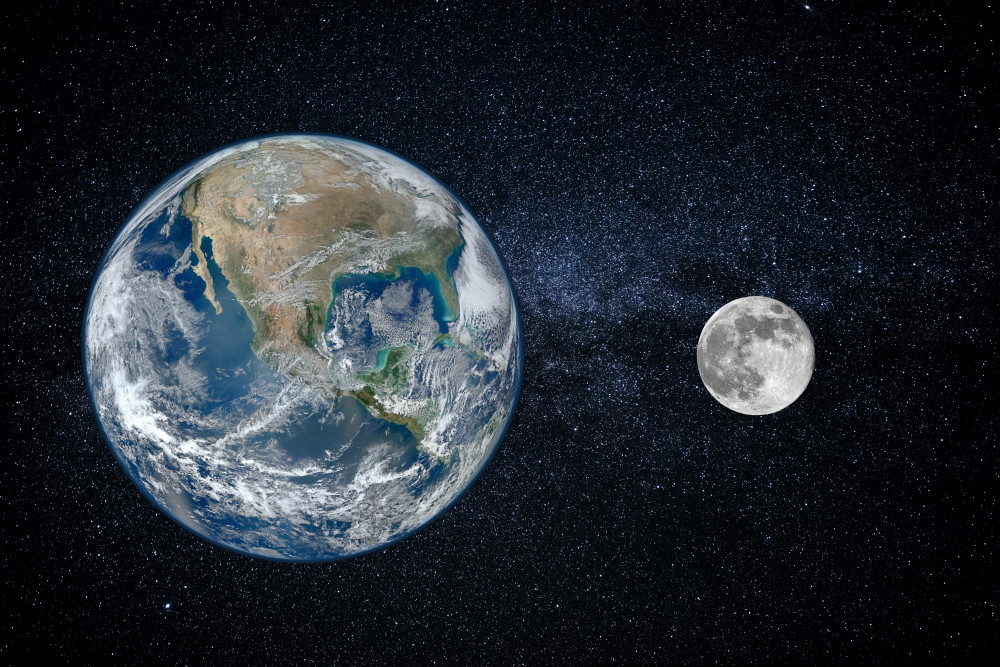
The Moon is smaller than the Earth so it has less mass. It has 1/6 of the Earth’s gravity. This means if you weigh 80 pounds (36 kilograms) on Earth you would only weigh 13 pounds (6 kilograms) on the Moon!
Gravity in our universe
Gravity is one of the greatest forces of our entire universe! It’s what created the stars and planets, by pulling together all the pieces they’re made up of. It’s also what keeps us close to the ground instead of drifting away into space.
That’s pretty amazing so far, but there’s something much bigger than the Earth, something that has an even bigger gravitational force and that’s the Sun. The Sun’s gravitational force is so strong it keeps the entire solar system together, making all the planets orbit around it.
But guess what? There’s something even bigger than the Sun! Black holes. Black holes have so much mass inside them that they can pull a lot more than the planets and stars.
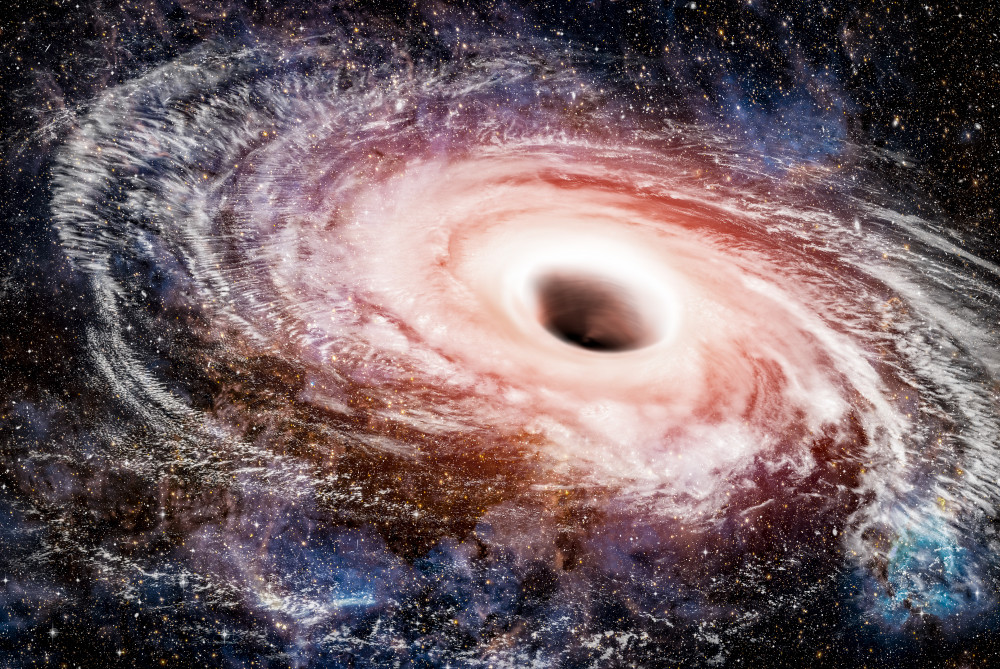
Our Sun orbits a black hole despite being over 25,000 light-years away from it. This means our entire galaxy is held together thanks to the gravitational pull of a black hole.
Gravity doesn’t only pull on mass though, it also pulls on light. Albert Einstein discovered this. If you shine a torch upwards, the light will grow redder as gravity pulls it, pretty crazy! We can’t see the change with our eyes but scientists can measure it.
Gravity on Earth
We couldn’t live on Earth without gravity. Thanks to the Sun’s gravity, Earth orbits around it at a nice comfortable distance instead of floating way out in space, away from the warmth. Gravity also holds down our atmosphere and keeps the air we breathe from drifting away. It causes hot air to rise and cold air to fall which causes winds; but did you know gravity is not the same everywhere on Earth? It is slightly stronger over places with more mass. NASA uses spacecrafts to measure the variations in the Earth’s gravity.

Gravity causes the tides of the oceans
Just like the Earth orbits the Sun, the Moon orbits the Earth. This is because the Earth pulls the Moon close with its gravitational force, stopping the Moon from crashing into it or from floating away. Because the Moon is made up of matter, it also has a gravitational pull, but it’s not strong enough to move Earth. It is strong enough however to move the oceans. The ocean tides we see are caused by the Moon’s gravity pulling the seas towards it. The ocean is reacting to the pull of the Moon’s gravity. Isn’t that amazing? The Sun can cause some tides too but the Moon is mostly responsible.
